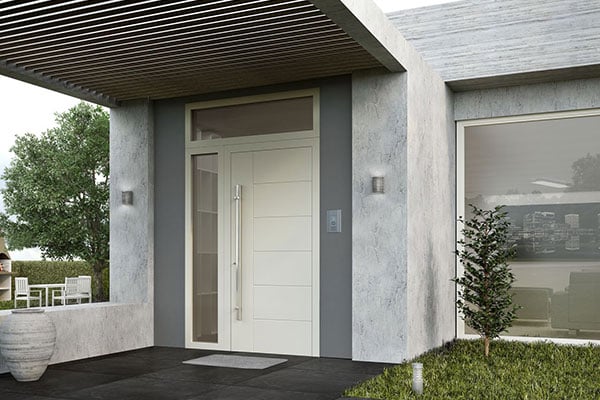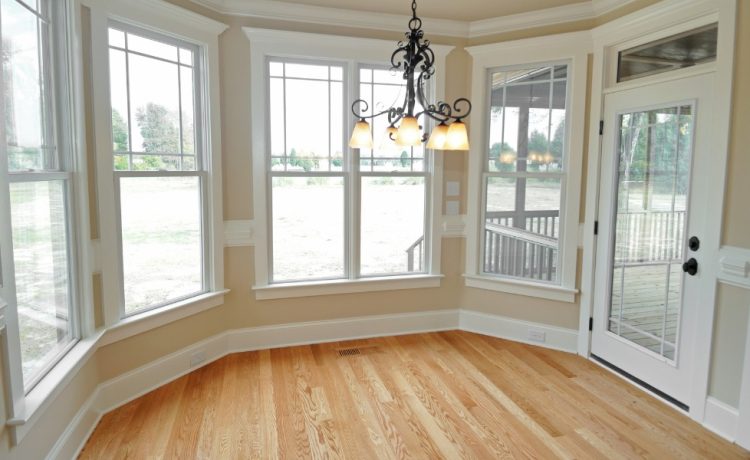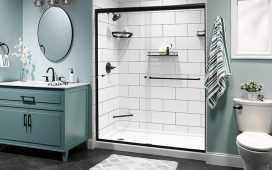Doors are often seen as mere structural necessities, but they serve a much greater purpose than simply allowing entry and exit. Their placement dictates how we move through a space, how we interact with it, and even how we feel within it. A well-placed door can create a sense of fluidity, guiding movement effortlessly, while a poorly positioned one can cause disruption, congestion, and discomfort.
From homes to offices, retail stores to public buildings, door placement is a subtle yet powerful design element that influences human behavior. Whether consciously or subconsciously, the positioning of doors affects traffic flow, privacy, accessibility, and emotional responses within an environment. Understanding the psychology behind door placement allows architects, designers, and homeowners to craft spaces that feel harmonious, intuitive, and efficient.
How Door Placement Shapes the Way We Move
Doors function as spatial gatekeepers, directing movement patterns within a building. The moment someone enters a room, their direction, pace, and overall movement are influenced by the placement of doors. A door positioned in the corner naturally directs a person along the perimeter of a space, while a centrally placed door encourages movement toward the middle.
In high-traffic areas, improper door placement can create bottlenecks, frustration, and inefficiency. When doors are aligned in a way that forces people to cross paths awkwardly, it can disrupt the natural rhythm of movement. Conversely, a thoughtfully positioned door ensures a smooth, uninterrupted flow, making spaces feel intuitive and well-organized.
The Subtle yet Powerful Influence of Doors on Behavior
The way a door is placed influences more than just physical movement—it affects how people perceive and interact with a space. For example:
- Wide, open doorways create a feeling of invitation and inclusivity, encouraging people to enter freely.
- Narrow, offset, or obscured doors can evoke hesitation or even create a subconscious barrier, discouraging movement.
- The direction a door swings can subtly signal whether a space is private, open, or restrictive.
In homes, door placement affects privacy and security, influencing whether a space feels open or secluded. In commercial settings, it can determine whether a store attracts or repels customers. Every door, no matter how small, plays a psychological role in shaping human behavior.
Why Understanding Door Placement Matters in Architecture and Design
In architecture, doors are not merely functional; they are strategic design elements that can enhance or hinder a space’s usability. Poor door placement can lead to awkward layouts, inefficient circulation, and discomfort, while well-placed doors can create harmony, flow, and purpose.
Architects and interior designers carefully consider sightlines, foot traffic, and spatial division when positioning doors. A door placed at the wrong angle or in an inconvenient location can diminish a room’s functionality, making movement cumbersome and unnatural.
When designing a space, door placement should align with:
- The function of the space (e.g., quiet areas should have doors that minimize disruption).
- The intended traffic flow (avoiding unnecessary congestion or detours).
- The emotional response the designer wants to evoke (openness, privacy, accessibility, etc.).
By understanding these principles, homeowners, designers, and builders can create spaces that feel more intuitive, comfortable, and efficient.
The Psychology behind Door Placement
Doors act as psychological thresholds, signaling transitions from one space to another. The brain instinctively processes doorways as boundaries, and their placement influences how people perceive the space beyond them.
A well-placed door makes a space feel natural and welcoming, whereas an awkwardly positioned door can create an unsettling effect, even if people can’t quite pinpoint why.
The positioning of doors dictates how people navigate and experience a space. A centrally placed door can make a room feel larger and more accessible, while an off-center door may make the same room feel imbalanced or confined.
Furthermore, when doors align perfectly across multiple rooms, it creates a clear line of sight, making spaces appear more open and connected. Misaligned or obstructed doors, on the other hand, can make a space feel disjointed and less inviting.
The Connection between Doorways and Human Behavior
Doorways subtly influence human interaction and movement patterns. For example:
- In social settings, wider, more open doorways encourage gatherings and conversation.
- In work environments, doors placed near desks or meeting areas can either enhance collaboration or enforce privacy, depending on their placement.
- In retail settings, door positioning affects customer flow—an inviting entrance encourages browsing, while a poorly placed door may deter customers.
Every doorway sends a silent but powerful message about how the space should be used and navigated.
How Door Placement Affects Natural Traffic Patterns
A building’s traffic flow is heavily influenced by where doors are positioned. Entrances and exits determine how people move from one area to another, and when door placement is poorly planned, it can lead to congestion, confusion, and inefficiency.
For example, in high-traffic areas, such as hallways or open offices, doors should be positioned to minimize collisions and bottlenecks. In contrast, low-traffic areas, such as bedrooms or private offices, benefit from doors placed in a way that enhances seclusion and comfort.
Doors also play a crucial role in defining open vs. closed floor plans.
- In open-concept spaces, doorways act as subtle dividers, maintaining accessibility while providing structure.
- In closed-concept spaces, doors help maintain privacy, control noise, and create distinct rooms.
The strategic use of doors allows designers to balance openness and separation, creating a dynamic yet functional environment.

The Psychological Impact of Door Visibility and Accessibility
A door that is easily visible and accessible creates a sense of invitation and movement. Conversely, a hidden or obstructed door may create feelings of restriction or discomfort.
In commercial spaces, for example, an inconspicuous entrance may deter customers from entering, while a well-positioned, open doorway encourages foot traffic. Similarly, in homes, a hidden or misplaced door can make a room feel closed-off or inconvenient. Properly positioned doors ensure ease of movement, accessibility, and a sense of openness within any environment.
Conclusion
Door placement is more than an architectural detail—it is a psychological tool that shapes how we move, interact, and experience our surroundings. A well-placed door can create flow, ease, and efficiency, while a poorly positioned one can disrupt, frustrate, and hinder movement.
By understanding the psychology behind door placement, homeowners, designers, and architects can create spaces that are not only functional but also harmonious and intuitive. Whether designing a home, an office, or a commercial space, door placement should always be thoughtful and intentional to ensure a seamless and enjoyable experience.
To enhance your own space, start by observing how doors affect movement, privacy, and interaction—and make small adjustments that can have a big impact on comfort and efficiency.


















